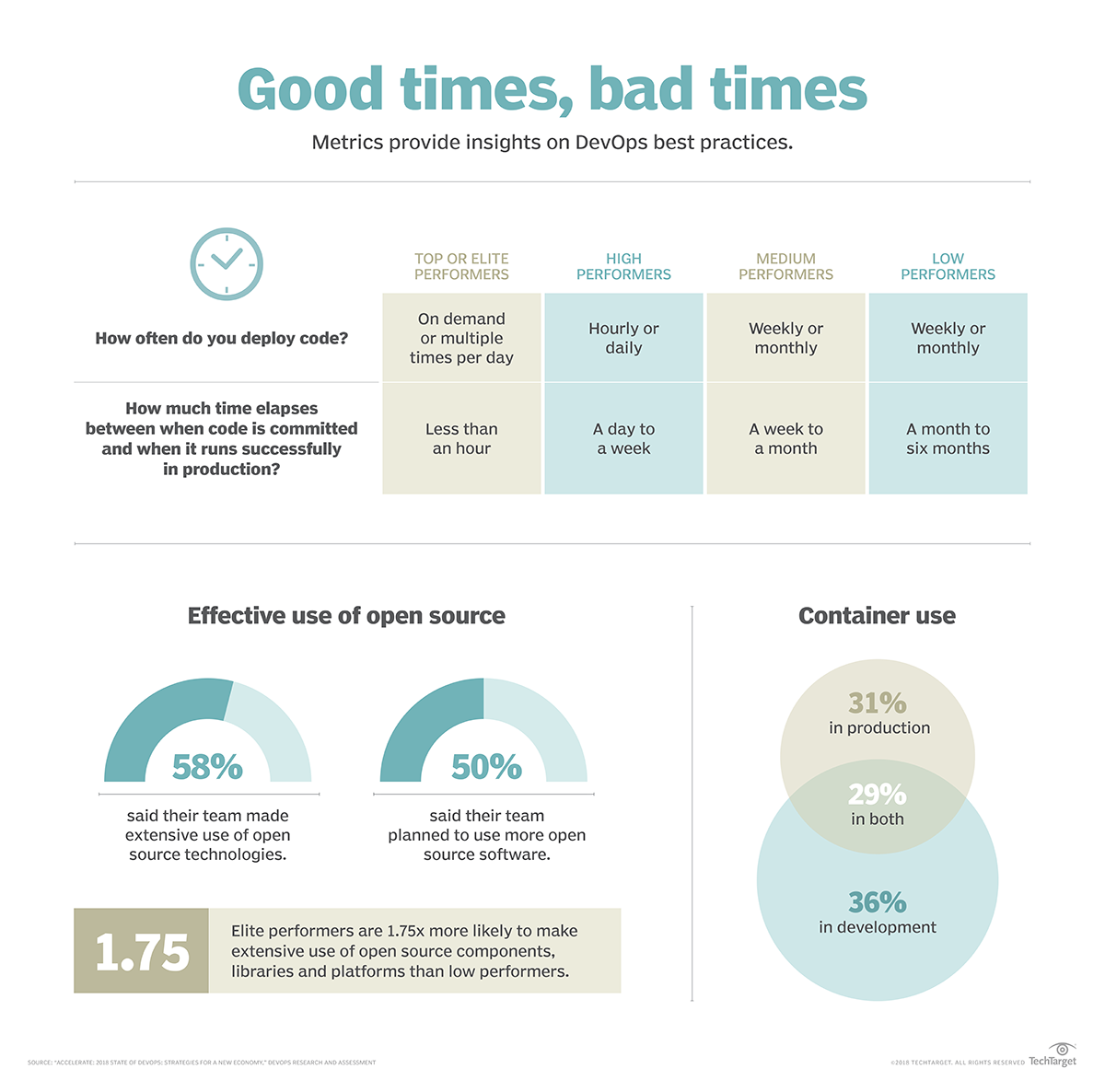Modern Stack
- Editor's letterQuantum supremacy and the path to encryption chaos
- Cover storyAI and machine learning take on cloud security woes
- InfographicDevOps metrics point to fast releases, open source adoption
- FeatureIn Kubernetes management, infrastructure work is tricky
- ColumnInvest in an IT infrastructure upgrade -- or keep fixing it
- ColumnCloud and containers rewrite monitoring and management rulebooks
DevOps metrics point to fast releases, open source adoption
You can always be better at DevOps. Assess these metrics from a variety of DevOps teams to see where you could stand to improve -- and give your team some positive reinforcement.It's one thing for an organization to declare its best intentions with DevOps. It's much more difficult, however, to look at DevOps metrics and find results that make all the requisite team reorganization and battle scars worth the effort.
Even a team that has successfully adopted DevOps methodology and incorporated best practices will wonder: Are we doing this right? Could we do it better?
Part of the problem is that it is not easy to know when DevOps is done well. There aren't universal examples of what success looks like when development teams and operations work in concert to create and deploy good software. Research, though, is beginning to show -- at least in outline -- what high-performing DevOps teams do that others don't do.
In "Accelerate: 2018 State of DevOps: Strategies for a New Economy," a study by DevOps Research and Assessment, also known as DORA, survey respondents revealed details about how they work within DevOps frameworks, such as how often and how quickly they deploy code, the extent to which they use open source tools, and how an organization's cloud strategy affects application results. The glimpses provide DevOps metrics that can be useful yardsticks to measure achievement.
The best performers, for example, can get newly deployed code working successfully in production in a day or less. Other teams need more than a month to accomplish this.
And the best of the best DevOps teams -- which DORA labels elite performers -- embrace all tenets of cloud computing, and not just the ones that are most convenient. That means making full use of cloud elasticity, on-demand provisioning, resource pooling and the other aspects that distinguish cloud computing from other models.
To make DevOps work well -- and securely -- is a challenge. Looking at the DevOps metrics that drive performance can point organizations in the right direction.
